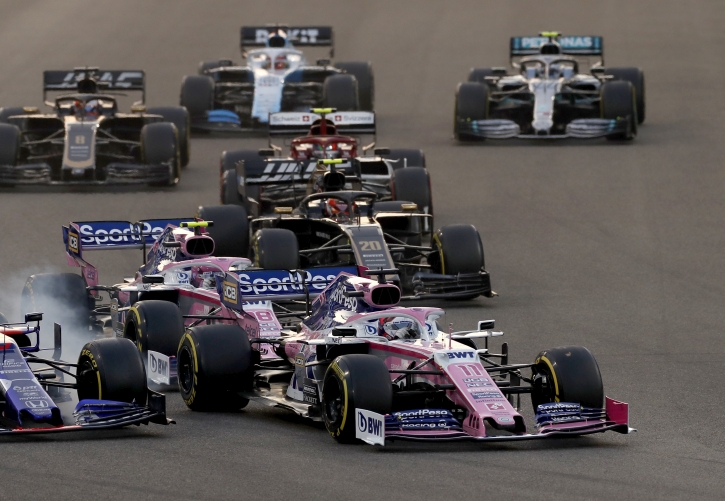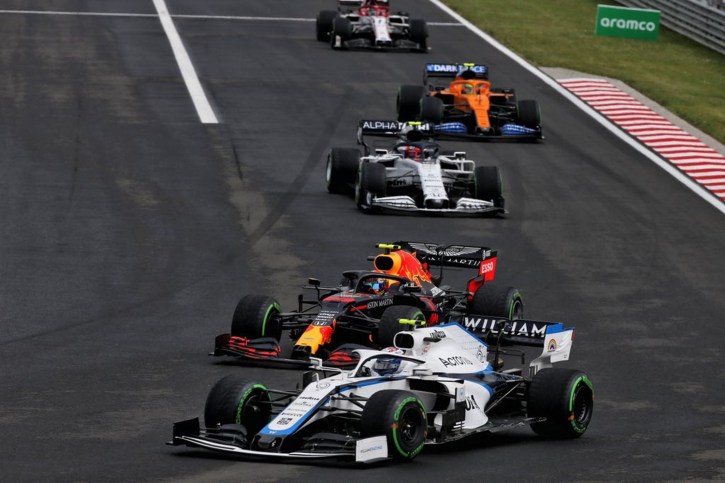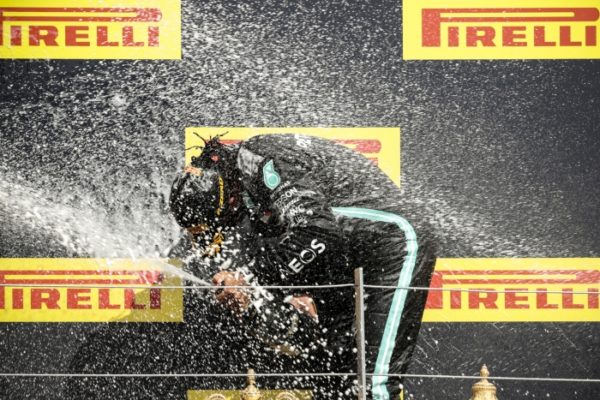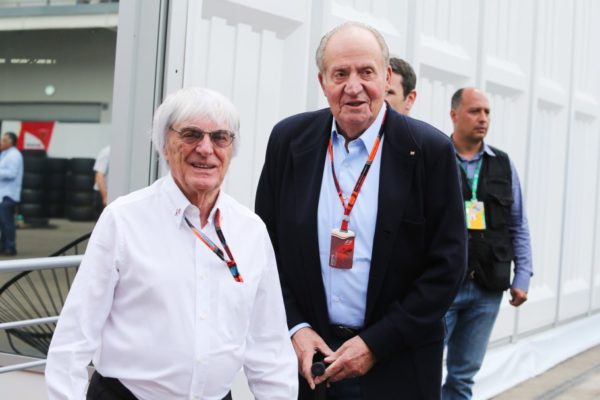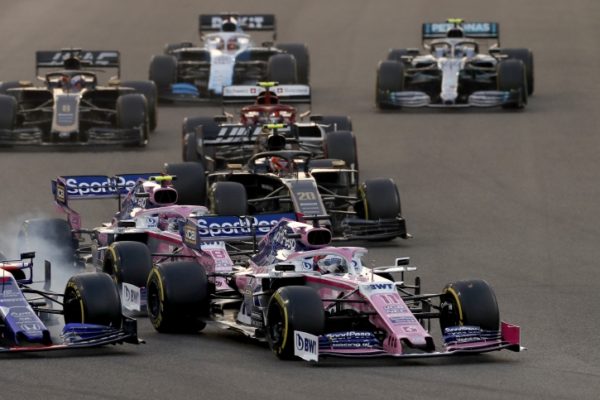In a bid to predict how the introduction of the V8 engine would affect Formula One, we published V8 vs. V10: The new heart of a Formula One car towards the end of last year. At the time I was bold enough to predict a follow-up article in February – which did not materialise. Sorry race fans – mea culpa. Here it is though, the very late but inevitable sequel, now that we know much more than in Feb anyway…
The Speed
The general pre-season prediction was a 2.5 second per lap difference in speed between the old and the new. The impact on speed is, of course, the most difficult impact to measure. It is not enough merely to compare lap times of various teams between the 2005 and 2006 season. No, first we have to take into account the average gain in speed per season in Formula One, not discounting the various rule changes from year to year (such as the dark day when grooved tyres were introduced). Then we have to take into account the impact of the changes in aerodynamic rules and the abolishment of the single tyre rule in 2006 (hooray!). Then, of course, we have to accept that power will have a far bigger impact at some circuits than at others – think of the massively quick pace at Imola vs the twisty, slower Monaco circuit, for instance. Lastly, we have to remove from the equation all elements of track change and races where it rained at a specific track.
As a basis for these calculations, a sample of eight tracks was selected: Imola, the Nurburgring, Monaco, Silverstone, Canada, Hockenheim, Suzuka and Monza. Between them they represent tracks that were consistently included in the calendar, as well as a reasonable representation of the different kinds of circuits, including the fastest (Imola) and the slowest (Monaco).
To put the times into perspective, here’s a short description of the rule changes between the seasons: From 2001 to 2004 there were no major or disruptive rule changes in terms of slowing down the cars – save perhaps the rule that, in 2004, engines had to last an entire race weekend. 2005 saw numerous changes: Engines now had to last two race weekends, no tyre changes were allowed during a race and downforce was decreased by about 20%. Aside from this, race-weekend testing was restricted and all teams but Ferrari agreed to cap between-race testing at ten days during the season. 2006 saw the reintroduction of tyre changes and, of course, the advent of V8 engines.
The lap time results were nothing short of fascinating: On aggregate, the fastest F1 car on the circuit gained 1.466 seconds per lap per season between 2001 and 2004 across the eight tracks. 2005, with its far-reaching rule changes, saw the fastest car losing an average .868th of a second per lap from 2004, and then a further 1.208 seconds per lap from 2005 to 2006 when the V8 was introduced.
If we assume from these findings then, that advances in the sport would have brought about a 1.466 second a lap increase in pace if there were no rule changes, and we assume that the tyre rule was responsible for half of the loss of pace between ‘04 and ’05, then by rights, without rule changes, 2006 would have seen a 1.9 second increase in pace. Add the actual 1.208 seconds loss to this and you arrive at more than 3.1 seconds! As much as it is a massive feat of engineering to take away twenty percent of an engine and restrict the loss of pace to around four percent, 3.1 seconds is a huge difference in Formula One.
Of course, the effect was very different at different tracks. If we take Imola, a fast track where engine power counts, the fastest lap difference between 2005 and 2006 alone was 2.711 seconds, a full 4.5 seconds slower than 2004. What happened at a track where engine power counts for little though? In Monaco, the fastest lap time was more than half a second faster than in 2005…
The Safety
If we take what is seemingly the FIA’s sole yardstick of safety, being Safety Factor = Speed*(-1) we walk away in two minds, all conflicted and confused. Sure, across the majority of tracks the overall lap times are down significantly. In Monaco, however, surely the most dangerous track on the calendar due to its narrow nature and complete lack of run-off areas, speeds are up. Why? Because cornering speeds are higher, that’s why. And this fact is true for all tracks. And where is the true danger? On the straights? Where cars have enough downforce to plaster them to a surface even upside down? No, it’s in the corners. Where racers attempt daring overtaking maneuvers, where cars turn in at insane speeds, where a front tyre sidewall has almost half of 600 kg pushing at it at no fewer than four sideways g-forces resulting in more than a tonne of pressure on a single sidewall, where a driver might realize, for the first time, that he has a flat rear tyre or his back wing is loose.
F1 teams will seek to gain the advantage wherever they can. If straight line speeds are forced down, they will focus in cornering speeds and milk it for all it’s worth. Not to mention that drivers, not having as much torque available to them as before to pull them from lower speeds, will naturally adjust their driving styles and lines ever so slightly to focus more on carrying speed through a corner. So, overall speed is down, cornering speeds are up. Has the V8 rule made a Formula One car a safer place to be then? Uhm…
The Costs
Cost saving was the major driving force behind the introduction of V8 engines. At the time, this columnist for one did not quite understand their logic, since disruptive rules and the need for major new developments must count towards one of the biggest costs in the sport. The facility at Viry-Chatillon, for instance, where they design and manufacture Renault F1 mills, costs US$120 million a year to run. I shouldn’t think that actual engine manufacture accounts for a large percentage of that. The vigour with which the various engine manufacturers set about chasing the magic 20 000 rpm mark is but one indication of the vast amounts of resources (and, by implication, money) that were thrown at new engines. The smaller V8 engines might ultimately be cheaper to manufacture but this saving will be marginal. Judging from these aspects, total costs could only have gone up.
Our previous article covered enough of what the teams had to say pre-season so we tried our best to get some new insights from teams and engine manufacturers now that the first V8 season is done. Honda, Toyota, Williams, Cosworth, Spyker and McLaren all declined to comment. We’ll have to go with logic then, and say that the cost benefits, if any, will only realise in the very long term.
The Success?
The limited loss of speed is a testament to the engineering and innovation marvel that the modern Formula One engine manufacturer has become. That, of course, only speaks of the success of the various manufacturers. The success of the rule? Limited – if that. So far there has been no tangible cost saving, only extra costs for development. The long-term costs might be down but, at the end of the day, the new engine homologation rule and engine supply concessions (which, very sadly, got rid of Cosworth), will have a far greater effect on engine costs than the V8 rule. Of course, those very same rules stifle innovation, just like the mass damper ruling and the banishment of BMW’s unique new wings this season. This will, in turn, further threaten Formula One’s position as the pinnacle of motor sport – much like the V8 rule does.
In terms of safety, they managed to slow down the cars. But not where it matters most – in the corners. Of course no self-respecting Formula One fundi would complain about this eventuality but that doesn’t change the fact that, fundamentally, the safety aspect of the rule has also failed.
Edu de Jager
DailyF1News.com
For all the columns by this author, click here
